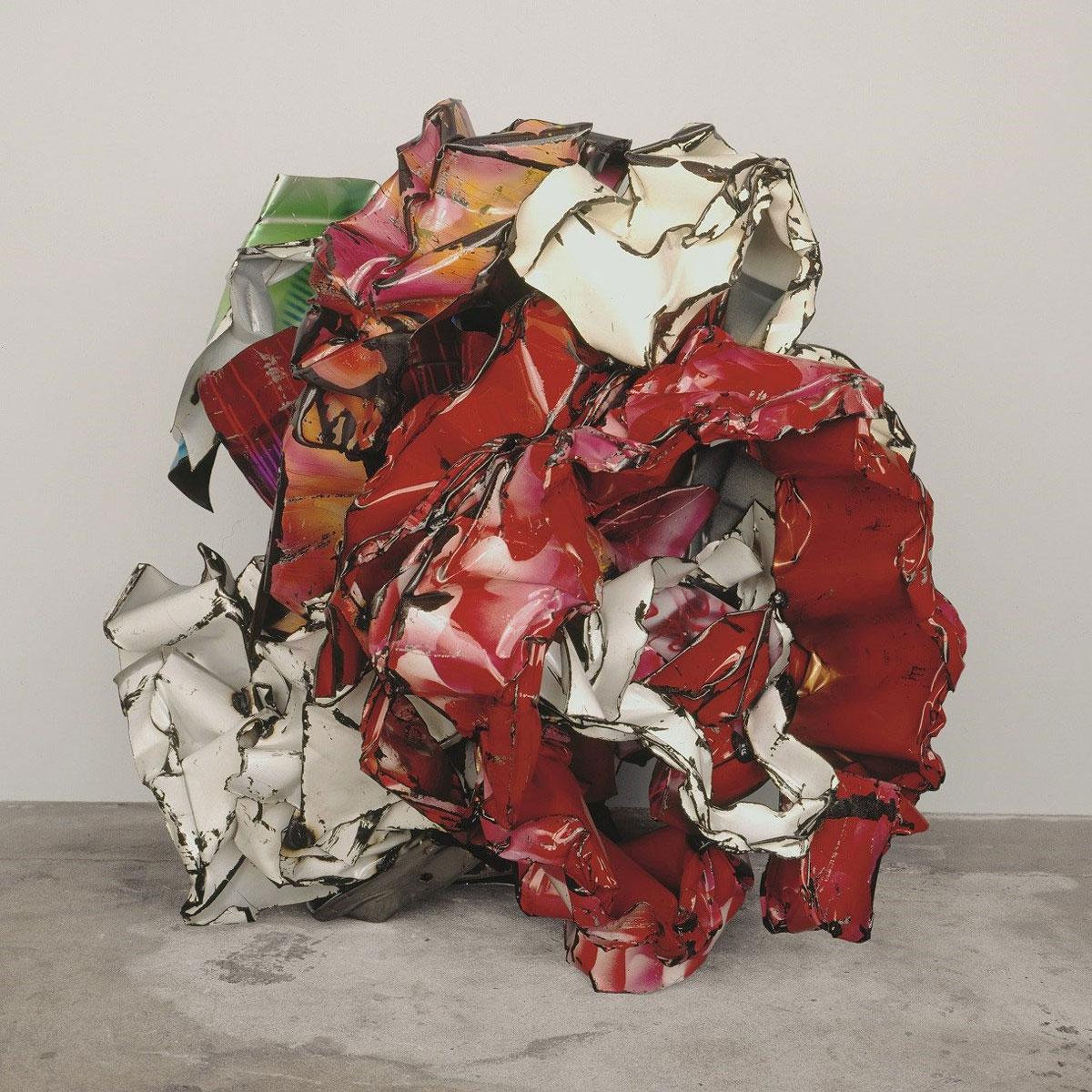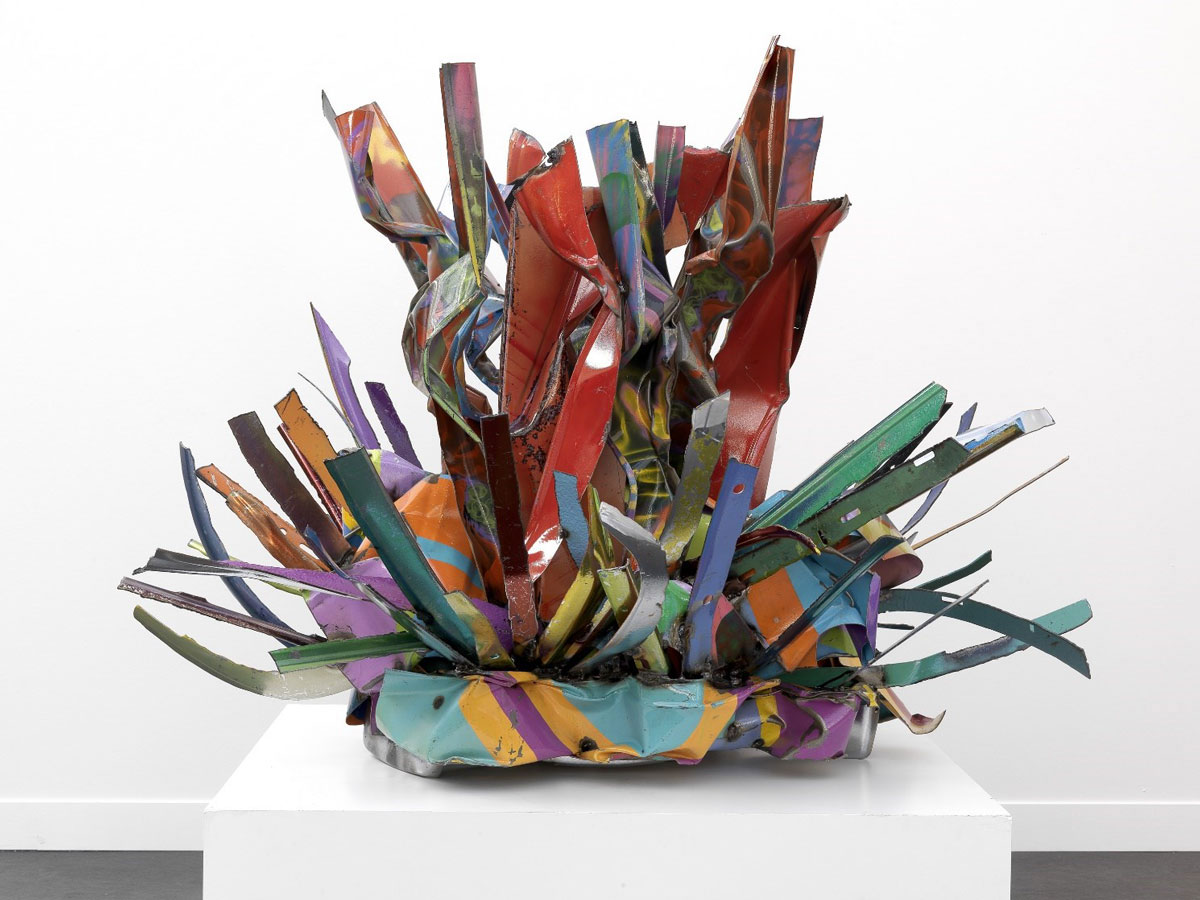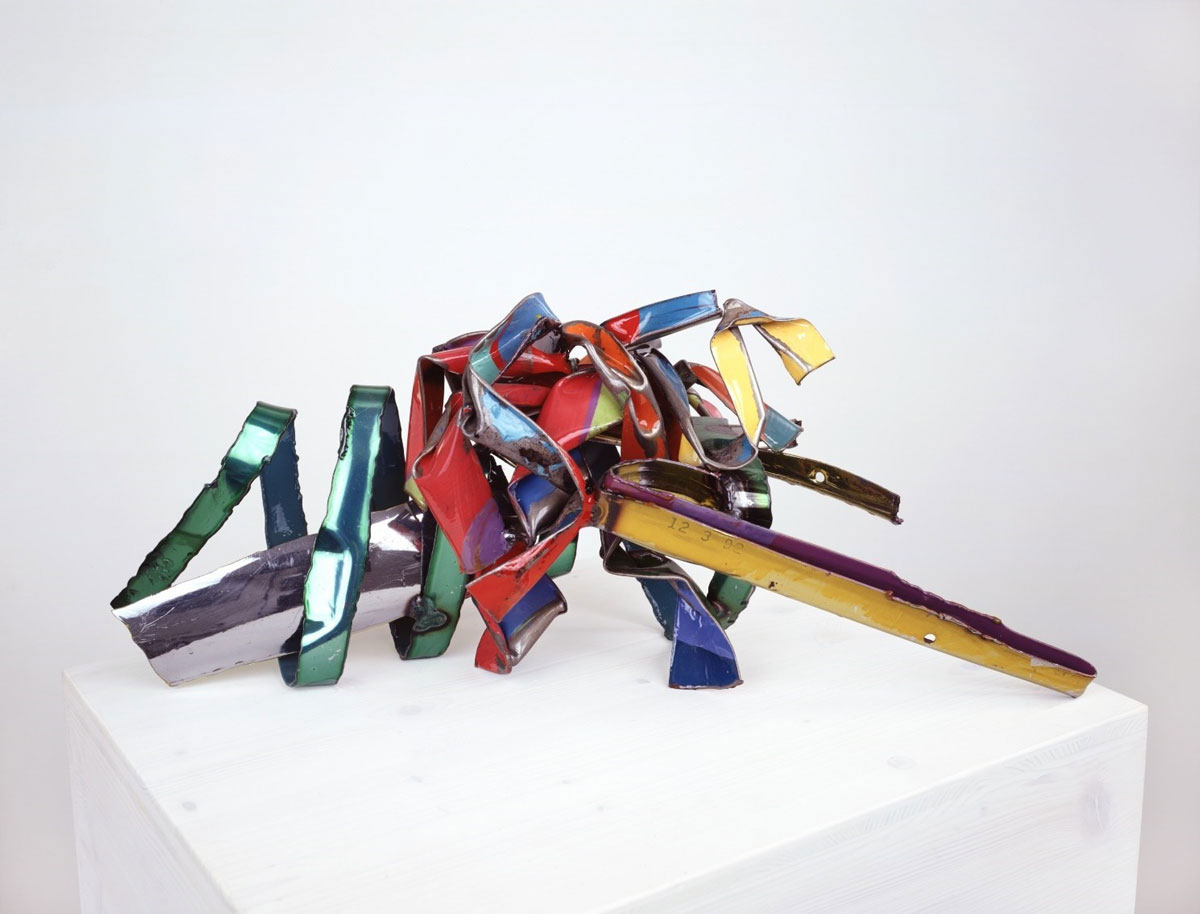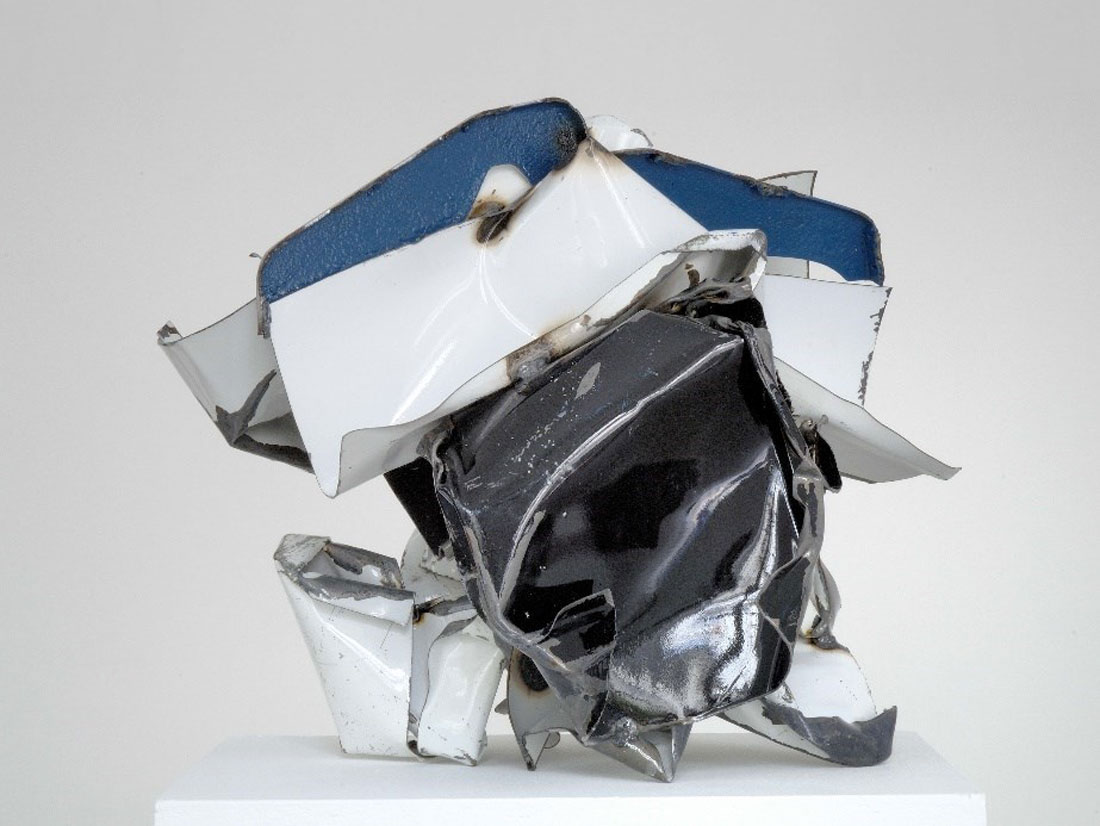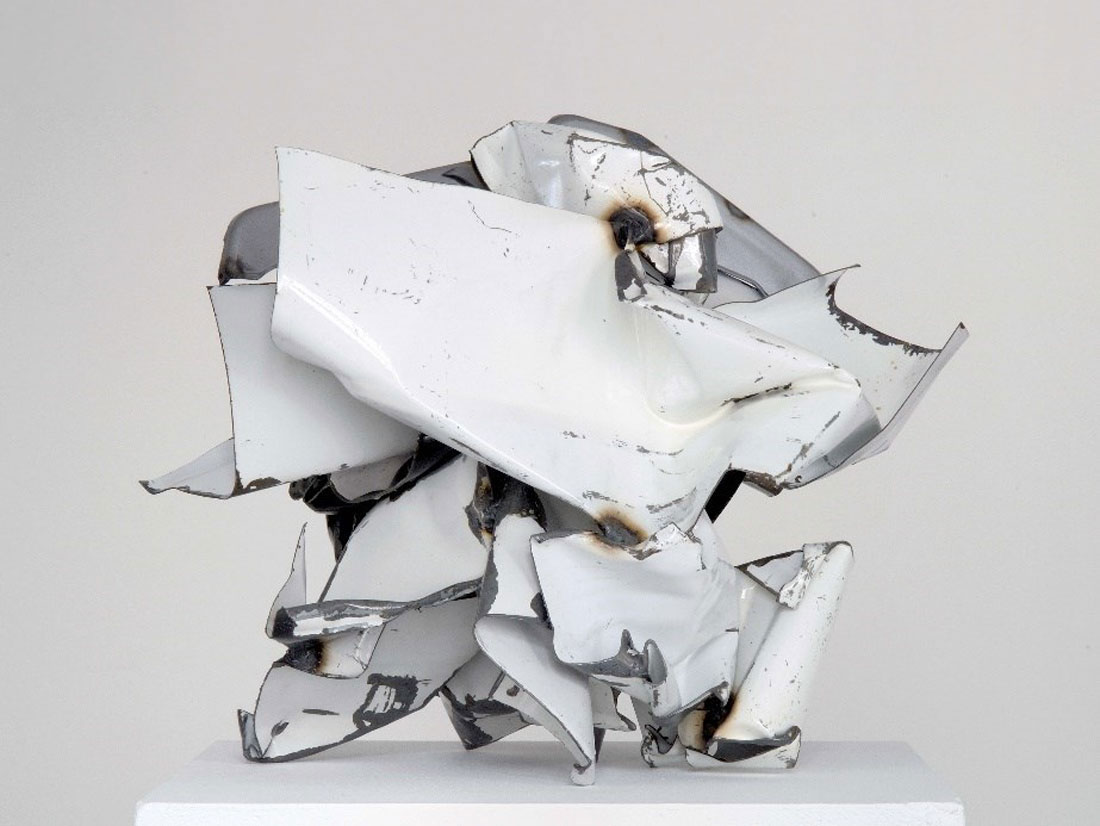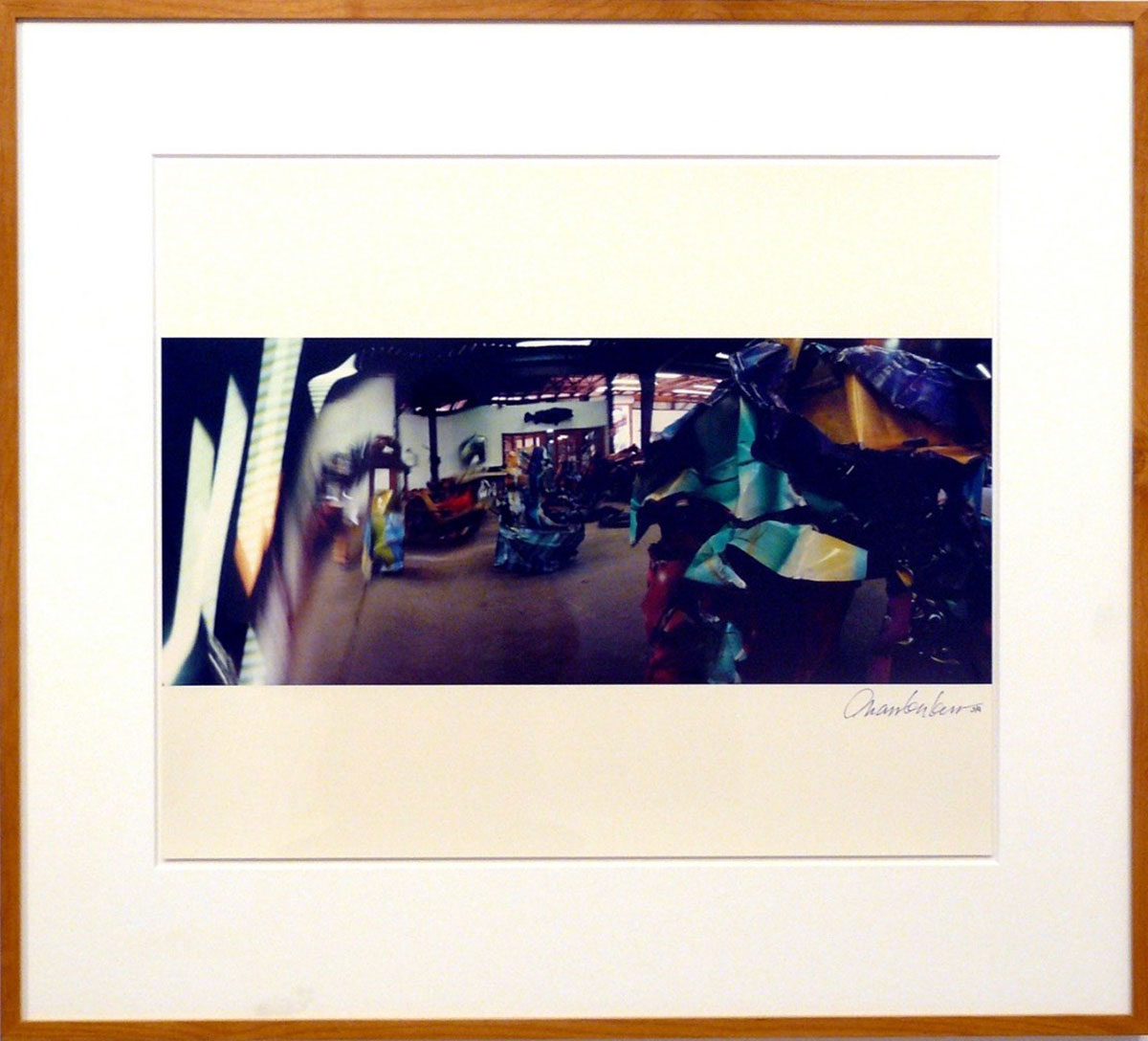ART CITIES: Paris-John Chamberlain
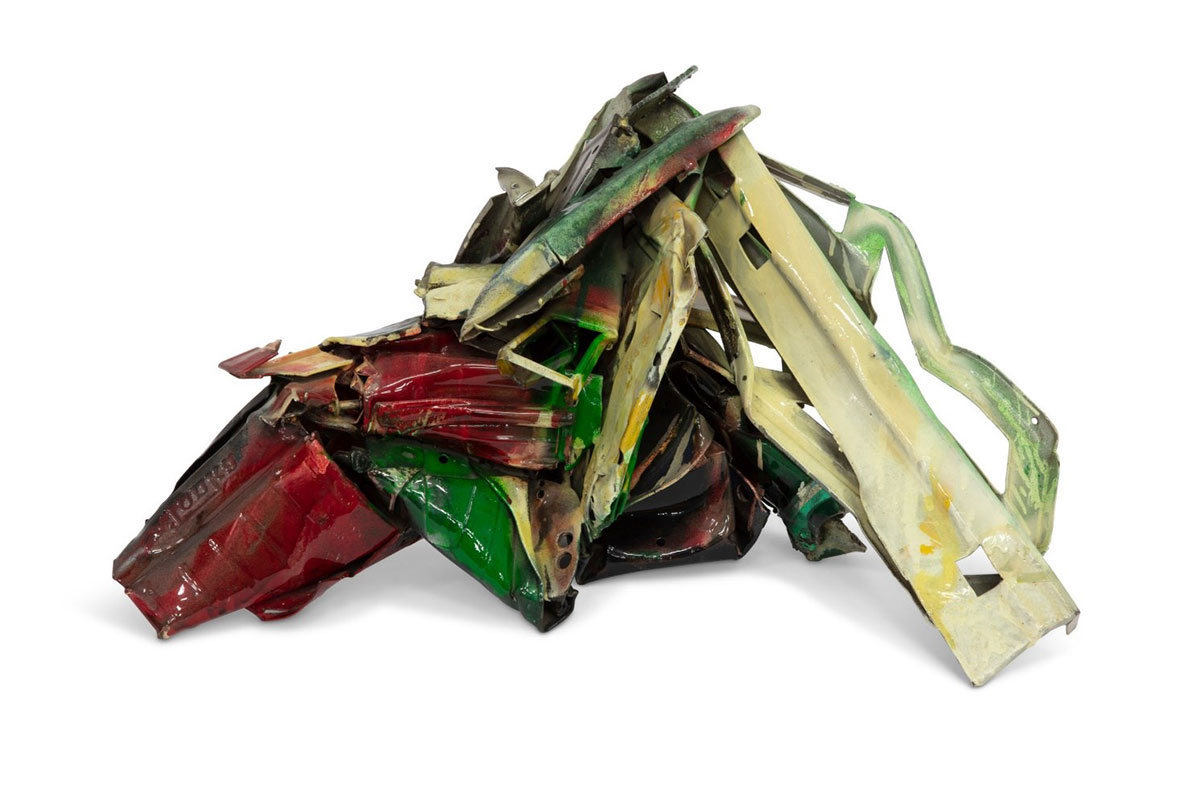 Almost all of John Chamberlain’s sculptures are made out of steel used in the automobile industry. His primary interest was in the interaction between volume, form and colour. By wrinkling, rolling, crushing, compressing and stretching the steel parts he diversified the material’s surface and at the same time deconstructed it into its varied components. The gestural character of his works and rich variety of bright colours on the one hand and his use of everyday materials on the other mean that Chamberlain’s sculptures oscillate between Abstract Expressionism and Pop Art.
Almost all of John Chamberlain’s sculptures are made out of steel used in the automobile industry. His primary interest was in the interaction between volume, form and colour. By wrinkling, rolling, crushing, compressing and stretching the steel parts he diversified the material’s surface and at the same time deconstructed it into its varied components. The gestural character of his works and rich variety of bright colours on the one hand and his use of everyday materials on the other mean that Chamberlain’s sculptures oscillate between Abstract Expressionism and Pop Art.
By Efi Michalarou
Photo: Galerie Karsten Greve Archive
“Sculpture”, is a new exhibition devoted to the work of John Chamberlain, the selected works span 40 years of his artistic creation, from 1967 to 2007. John Chamberlain was one of the greatest artists of the 20th century, a master of metal-folding and -transformation and an exceptional colorist. While visiting his friend Larry Rivers in Southampton, in 1957, as he was ruminating on the lack of materials and tools he needed to continue creating the welded steel sculptures that had preoccupied him for the last several years, John Chamberlain saw a 1929 Ford standing nearby. Quite suddenly he found himself detaching the two front bumpers from the Ford, twisting some metal wire around them; and then, finding the result not completely satisfying, he drove over them once or twice and called what he had done “Shortstop” . In a way, Chamberlain managed to seize that new form of pictorial expression and convey it in a sculptural shape – incidentally, it is often said that his sculptures are the counterparts of Willem de Kooning’s canvases, in a certain symbiosis between shape, gesture and color. From his first solo exhibition at the Martha Jackson Gallery in 1960, John Chamberlain seduced a large number of collectors and artists with his perception of matter. They included Robert Rauschenberg, Donald Judd and Andy Warhol. Andy Warhol even acquired “Papagayo” (1967), one of John Chamberlain’s largest galvanised-steel sculptures, which was later exhibited at the Guggenheim Museum, New York, in 1971 for the artist’s very first retrospective and on display here. “Papagayo” is characteristic of his work in the second half of the 1960s, when Chamberlain was experimenting by briefly choosing to forgo color and give free reign to the shadows and lights on the surface of the metal in a minimalist bent. That interlude accentuated the density of the metal that became so malleable in the hands of the artist. John Chamberlain proclaimed himself a three-dimensional collage artist, because he assembled the most varied parts in a new structure (while preserving the initial properties of the medium). That was the case with “Double Hooded Jim” (1974) and “Silver Plait” (1976), which distinguish themselves by the assemblage of several parts that come to form one single entity. His sculptures have no narrative; they shine with an inherent poetry on the sole basis of their shapes, demonstrating the importance of Chamberlain’s artistic choice in assembling and balancing the parts. The idea of assemblage is central in all of John Chamberlain’s oeuvre, both in his working of metal and in his pictorial exercises. The series of works on paper View from the “Cockpit” (1976) shines with the intensity and pureness of the colors projected in a graphic whole – a nod to Robert Delaunay’s orphism. His rarely exhibited monotypes date back to the middle of the 1980s and showcase yet another different exercise, which could be sculpture not in volume, but on a two-dimensional support to which he applied color through collage and assemblage. A series of photographs is also to be displayed on the occasion of the exhibition, completing the overview of the various aspects of the artist’s work. In 1977, John Chamberlain started experimenting with a Widelux camera. Its unique structure made the lens pivot on a panoramic horizontal arc to obtain distortive effects that would be impossible with traditional cameras. Chamberlain took the photographs as he swung the camera, as in “Downtown” (1989). Also in 1984, the theorist Hal Foster wrote that “the space vacated by the old ‘sculpture’ category” had given way to the new, underlining the importance given to both the medium and space, which transcended the traditional dogmas of the discipline. The Sculpture exhibition thus invites viewers to observe countless variations upon shapes and space masterfully wielded by one of the greatest artists of the twentieth century.
Photo: John Chamberlain, Tonk #15-86, 1986, Paintd steel, 26 x 54 x 36,8 cm / 10 1/4 x 21 1/4 x 14 1/2 in, Photo: Galerie Karsten Greve, Courtesy Galerie Karsten Greve Cologne, Paris, St. Moritz
Info: Galerie Karsten Greve, 5 rue Debelleyme, Paris, France, Duration: 20/10/2022-7/1/2023, Days & Hours: Tue-Sat 10:00-19:00, https://galerie-karsten-greve.com/
